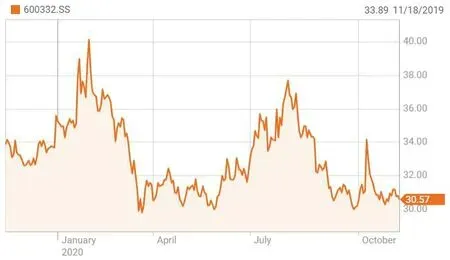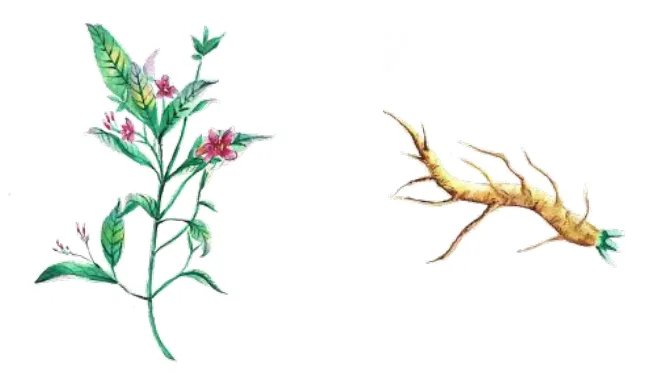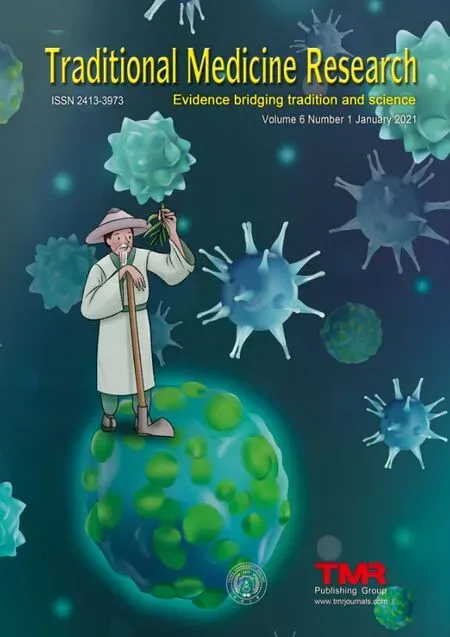“Banlangen (Radix isatidis) compound granules as a treatment for COVID-19”-the market value of Baiyunshan pharmaceutical soared by 10 billion RMB
2021-12-04DanChen
Dan Chen
1Editorial Office,TMR Publication Group Limited,Auckland 2014,New Zealand.

On October 13, 2020, the fourth board meeting of the Guangdong-Macau Joint Research Centre for New Drug Discovery against respiratory pathogens and the Macau Symposium on Translation of Baiyunshan Banlangen and Cooperation Agreement Signing Ceremony was held in Guangzhou.At the meeting,Zhong Nanshan, a recipient of Medal of the Republic and an academician in the Chinese Academy of Engineering, revealed that a series of in vitro studies performed by his research team had found Baiyunshan Compound Banlangen granules to be effective in treating COVID-19[1].Driven by this message,the Aand H-share prices of Baiyunshan pharmaceutical increased to a large scale, with the former hitting the daily limit-up price at mid-session and the latter exceeding 13% of increases at one point during the session.Collectively, the market value of the two shares increased dramatically by approximately 10 billion RMB [2].On October 23, 2020, academician Zhong Nanshan responded by saying, “There were people who fragmented my speech and misinterpreted it, and what I meant was exaggerated.” [3].Gao Li, a speaker for the China Securities Regulatory Commission,said at a press conference on October 23,2020 that the commission would keep following up on the situation and take legal actions on anything deemed to be illegal or in violation of relevant rules or regulations[4].
Banlangen granules are a traditional Chinese medicine granule formulation (approved number by China Food and Drug Administration: Z44023371).Its main ingredient is Banlangen (Isatis tinctoriaroots,Figure 1) and its excipients are sucrose and dextrin.During the SARS outbreak in 2003, the National Administration of Traditional Chinese Medicine organized specialists to formulate “Traditional Chinese Medical Technical Regime for Prevention and Treatment of Atypical Pneumonia” for trial implementation, in which a pre-formulation based on Banlangen was included.Therefore, Banlangen is considered to be of prophylactic and therapeutic values[5].A study by Ruan et al.found that mice pretreated with Banlangen extracts had increased survival and decreased liver and lung injury induced by lipopolysaccharides via inhibition of inflammation [6].Liang et al.found that fruit acids from Banlangen inhibited influenza A virus replication and resultant inflammation in vitro and in vivo by regulating NF-κB and p38MAPK pathways [7].However, all drugs must go through three phases, i.e., in vitro experiments,animal trial, and clinical trial, before their clinical application for treatment.Banlangen granules have only undergone in vitro testing in cells within a laboratory, and there is a long way to go before the clinical effectiveness of the formulation can be proved.

Figure 1 Radix isatidis whole plant and the plant's root
Once the news was released, Banlangen was sold out in many regions.In fact, similar scenarios have occurred repeatedly since the pandemic.In as early as February of this year, the release of a news article entitled “Shuanghuanglian Inhibits COVID-19 Virus”caused Shuanghuanglian oral liquids to sell out overnight [8].Earlier in 2013, people in mainland China also rushed to purchase Banlangen granules for preventing H7N9 avian flu.However, as remarked by the academician Zhong Nanshan, Banlangen is toxic when consumed excessively and affects the human hematopoietic and gastrointestinal systems[9].
杂志排行
Traditional Medicine Research的其它文章
- The dynamic changes and mechanisms of Rehmanniae radix processing based on Maillard reaction
- Investigation of in vitro antioxidant activity of dihydromyricetin and flavonoids rich extract from vine tea(Ampelopsis grossedentata)
- Advances in anti-inflammatory and immunoregulatory mechanisms of sinomenine
- Hua-Zhuo-Kai-Yu decoction inhibits apoptosis in nonalcoholic fatty liver disease
- Qiming granule in treating type 2 diabetic kidney disease patients:study protocol for a randomized controlled trial
- Bibliometric analysis of acupuncture research through the Web of Science database from 1990 to 2019
